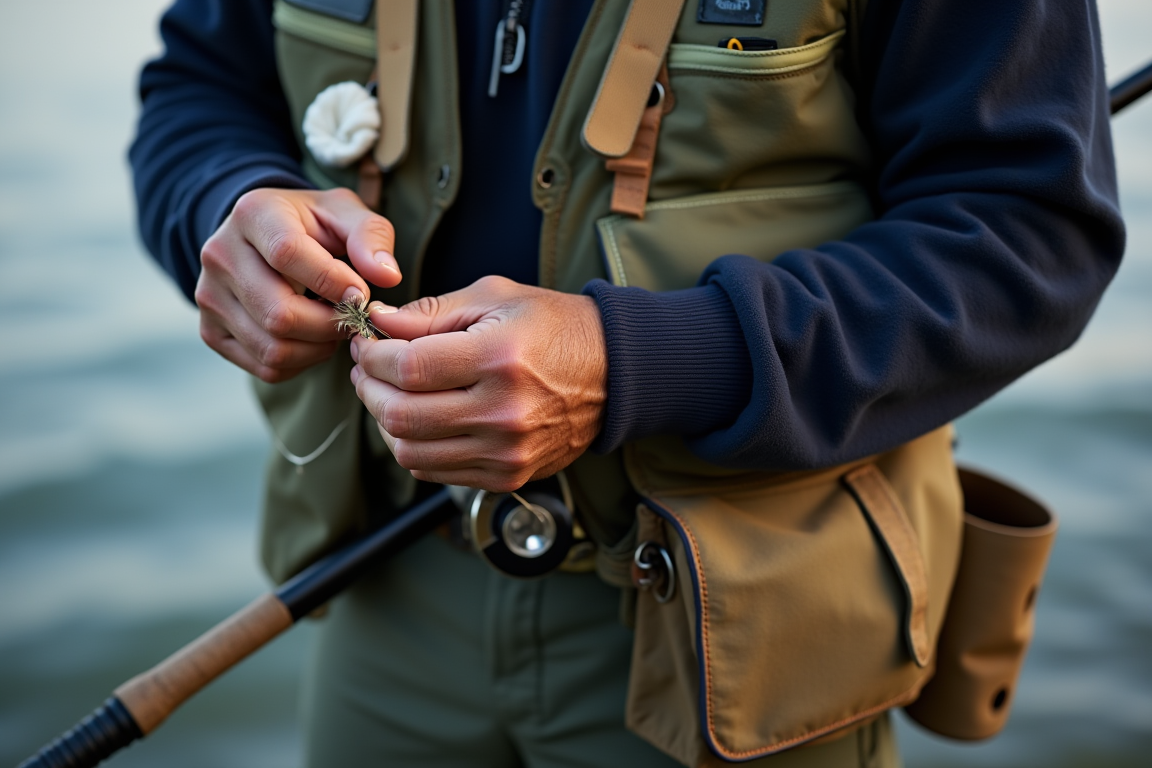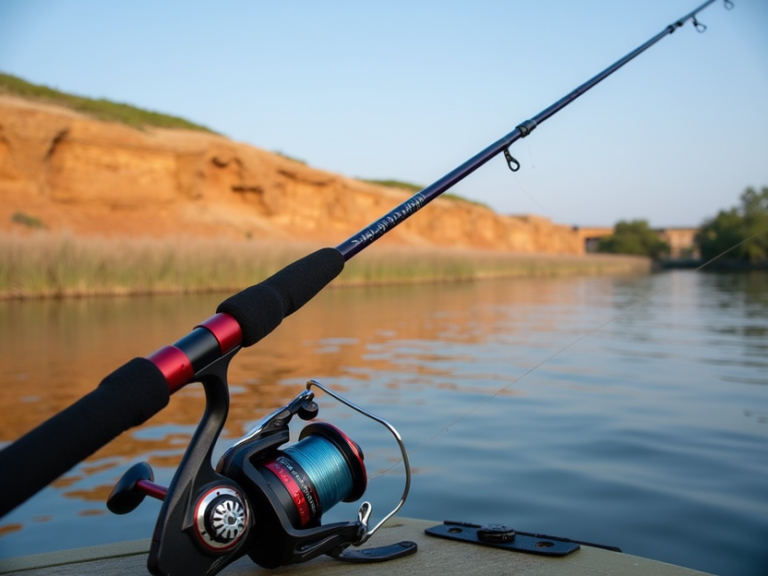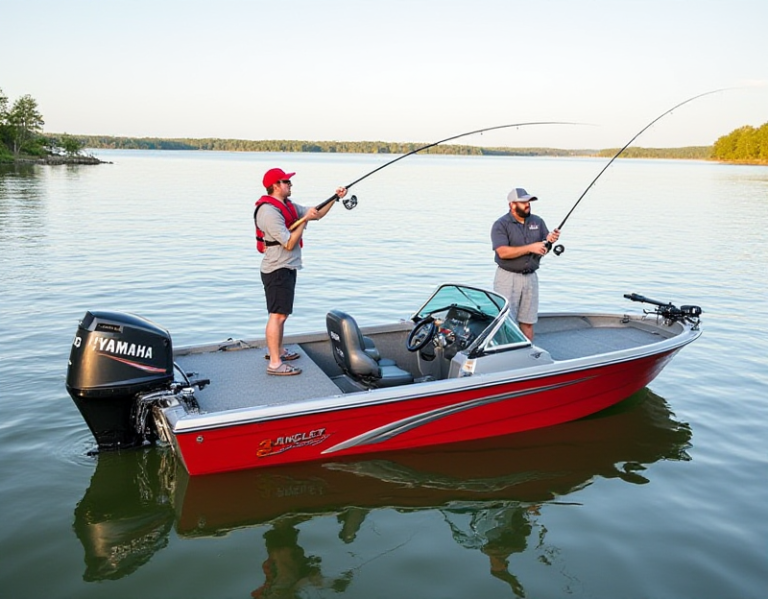Best Fishing Knot for Beginners
If you’re just starting your fishing journey, you might be wondering: “What’s the secret to successful fishing?” The answer often lies in something as simple yet vital as the fishing knot. A fishing knot is the crucial link between your line and your tackle, and knowing how to tie it properly can mean the difference between catching a prized fish or watching your tackle sink helplessly to the bottom.
As a beginner, understanding and mastering fishing knots should be one of the first skills you acquire. In this guide, we’ll walk you through the best fishing knots for beginners, offering clear instructions, helpful tips, and expert advice so you can hit the water with confidence.
Why a Good Fishing Knot is Essential for Beginners
Whether you’re fishing in a quiet lake or battling the waves of the ocean, fishing knots are the unsung heroes of your fishing setup. You might have the best rod, reel, and lure, but if your knot fails, all that gear is pointless. Poorly tied knots can cause your tackle to come loose, resulting in lost catches, wasted time, and frustration. For beginners, it’s crucial to learn how to tie strong, reliable knots to make the most of your fishing trips.
A good fishing knot should:
- Hold Strong: A reliable knot ensures your hook or lure stays attached to the line, even when battling a big catch.
- Prevent Line Damage: Proper knotting minimizes damage to your fishing line, preventing it from snapping when you least expect it.
- Enhance Your Fishing Efficiency: Knowing the right knots helps you get back in the action quickly and ensures your setup is always ready.
By learning the essential knots, you’ll boost your confidence, improve your fishing experience, and increase your chances of landing that big fish!
The 3 Best Fishing Knots Every Beginner Should Know
1. The Improved Clinch Knot
This is by far one of the most popular and reliable fishing knots for beginners. It’s simple to tie and works well with almost any type of fishing line, whether you’re using monofilament or fluorocarbon.
Why it’s great for beginners:
- Reliable: The Improved Clinch Knot is known for its strength and security.
- Versatile: It’s ideal for attaching hooks, lures, or swivels to your fishing line.
How to Tie the Improved Clinch Knot:
- Thread the line through the eye of the hook.
- Wrap the tag end of the line around the standing line five to seven times.
- Pass the tag end through the small loop just above the eye of the hook.
- Pull the tag end tight to secure the knot, ensuring the coils are snug.
- Trim the excess line close to the knot.
Tips for Success:
- Wet the line before tightening the knot to reduce friction.
- Make sure the coils are neatly aligned to prevent the knot from slipping.
2. The Palomar Knot
Next up is the Palomar Knot, which is often praised for its simplicity and strength. This knot is highly recommended for beginners, especially if you’re using braided line, as it can handle the higher tension of this material.
Why it’s great for beginners:
- Quick and easy: The Palomar Knot is easy to tie, even with one hand, making it perfect for beginners.
- Super strong: It’s one of the strongest fishing knots out there, ensuring your hook stays secure.
How to Tie the Palomar Knot:
- Double the line and pass it through the hook’s eye.
- Tie a simple overhand knot with the doubled line.
- Pass the hook through the loop created by the overhand knot.
- Pull the tag end and standing line to tighten the knot, ensuring it’s secure.
- Trim the excess line close to the knot.
Tips for Success:
- The Palomar Knot works best when tying lures, hooks, or swivels.
- It’s particularly effective for braided lines, as it maintains strong holding power.
3. The Loop Knot
A Loop Knot is perfect when you want to give your lure or hook more movement in the water. It allows the hook to rotate freely, mimicking the natural behavior of baitfish, which can make your presentation more attractive to fish.
Why it’s great for beginners:
- Natural presentation: The loop knot gives your bait a lifelike movement.
- Simple to tie: While slightly more complex than the first two knots, it’s still easy to learn for most beginners.
How to Tie the Loop Knot:
- Create a loop at the end of the fishing line.
- Wrap the tag end around the standing line 5-7 times.
- Pass the tag end through the loop you created in step 1.
- Pull the knot tight, adjusting the loop size as needed.
- Trim the excess line close to the knot.
Tips for Success:
- Use the Loop Knot with lures or trolling rigs.
- It’s especially useful when fishing with live bait.
Common Mistakes Beginners Make When Tying Fishing Knots
As a beginner, you’re bound to make a few mistakes when tying knots, but don’t worry—it’s part of the learning process. Here are some of the most common mistakes and how to avoid them:
1. Not Wetting the Line Before Tightening
One of the biggest mistakes beginners make is failing to wet the line before tightening the knot. Dry lines create friction, which can weaken the knot and cause your line to snap. Wetting the knot helps it tighten smoothly, reducing the risk of line breakage.
2. Over-tightening the Knot
It might seem logical to tighten the knot as much as possible, but over-tightening can actually damage the line. Always tighten the knot slowly and gradually, making sure the coils are aligned neatly.
3. Forgetting to Trim the Excess Line
Leaving too much excess line can cause the knot to slip. After tying your knot, always trim the extra tag end close to the knot, ensuring there’s no excess that could catch on anything and weaken your knot.
How to Choose the Right Knot for Different Fishing Situations
Not every knot is ideal for every fishing scenario. Here’s a quick guide to choosing the best knot for your specific fishing conditions:
Freshwater Fishing
For freshwater fishing, where the fish are generally smaller and the line is thinner, the Improved Clinch Knot is usually your best bet. It works well for most freshwater fishing techniques, including lure fishing and bottom fishing.
Saltwater Fishing
Saltwater fishing often involves heavier tackle and larger fish. The Palomar Knot is ideal in these conditions because it’s strong and secure, capable of handling the extra tension that comes with saltwater environments.
Fly Fishing
When fly fishing, you’ll often need a Double Surgeon’s Knot to join two pieces of line or to attach a fly to your leader line. This knot is simple to tie and strong enough to withstand the unique demands of fly fishing.
How to Practice Tying Fishing Knots
The key to becoming proficient at tying fishing knots is practice. Here are some tips to help you perfect your knot-tying skills:
1. Start with the Basics
Begin with simple knots like the Improved Clinch Knot and the Palomar Knot. Once you’re comfortable with these, move on to more advanced knots like the Loop Knot or the Uni Knot.
2. Use a Knot Tying Tool
Consider using a knot-tying tool to help guide your hands as you practice. These tools are especially helpful for beginners as they provide a steady grip and clear visual instructions.
3. Practice Regularly
Like any skill, practice makes perfect. Try tying knots at home while watching TV, or practice on the water when you’re not actively fishing. Over time, you’ll become quicker and more confident.
Fishing Knot Charts & Guides: A Visual Aid for Beginners
Sometimes a visual reference can be more helpful than written instructions. Here are a couple of helpful tables to guide you:
Knot Comparison Table
| Knot Name | Strength | Ease of Tying | Ideal for |
|---|---|---|---|
| Improved Clinch | High | Easy | Connecting hooks, lures |
| Palomar Knot | Very High | Easy | Heavy-duty tackle |
| Loop Knot | Moderate | Moderate | Lures, trolling |
Recommended Knots for Specific Fishing Types
| Fishing Type | Recommended Knot |
|---|---|
| Freshwater | Improved Clinch Knot |
| Saltwater | Palomar Knot |
| Fly Fishing | Double Surgeon’s Knot |
FAQ Section – Your Fishing Knot Questions Answered
Q1: What is the easiest knot for beginners?
- The Improved Clinch Knot is often considered the easiest knot for beginners, thanks to its simplicity and reliability.
Q2: Can I use the Palomar Knot for all types of fishing?
- Yes, the Palomar Knot is incredibly versatile and works well for a variety of fishing techniques, especially when using braided or monofilament lines.
Q3: Why does my fishing knot keep breaking?
- Your knot might be breaking due to improper tying, using the wrong type of knot for your line, or failure to wet the line before tightening. Check your
| Best Fishing Knot for Beginners |


